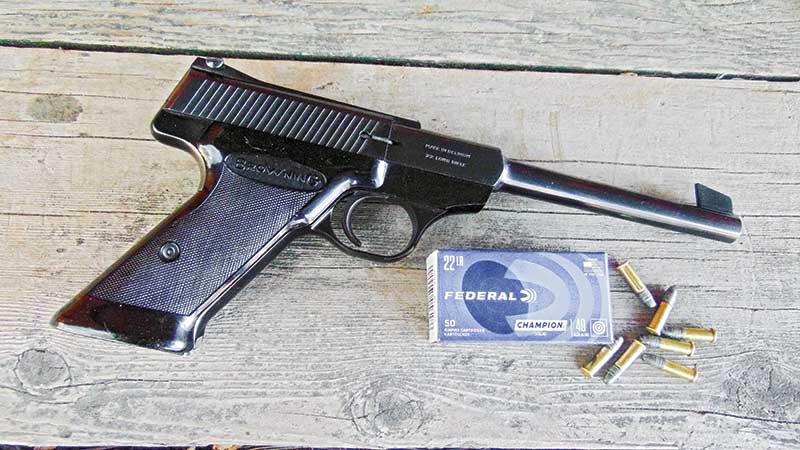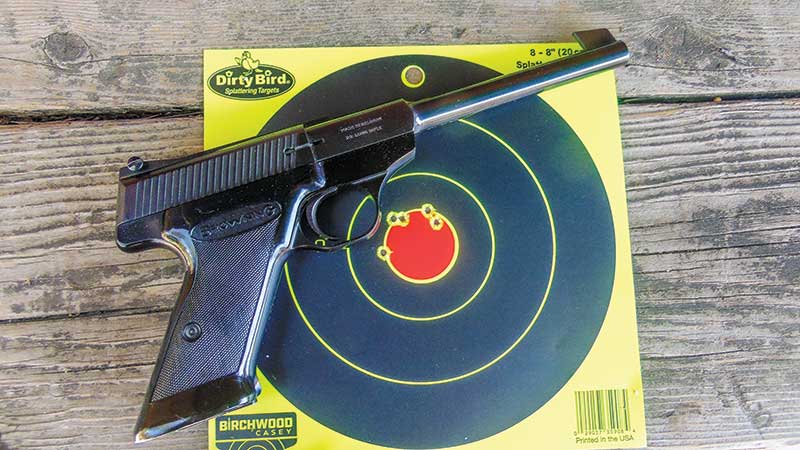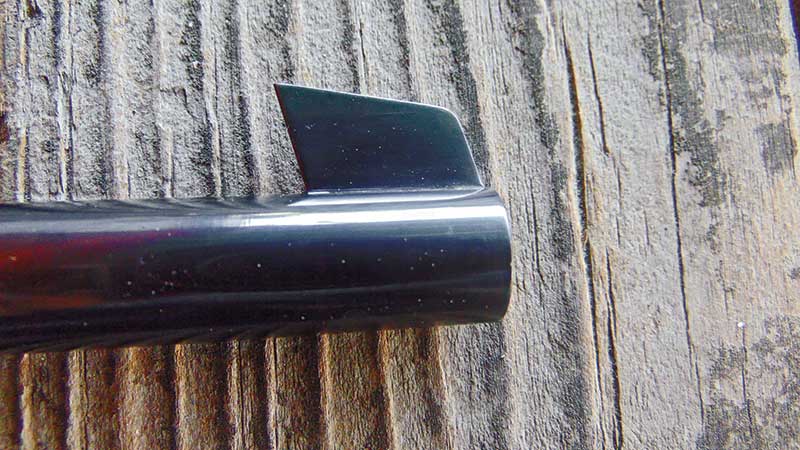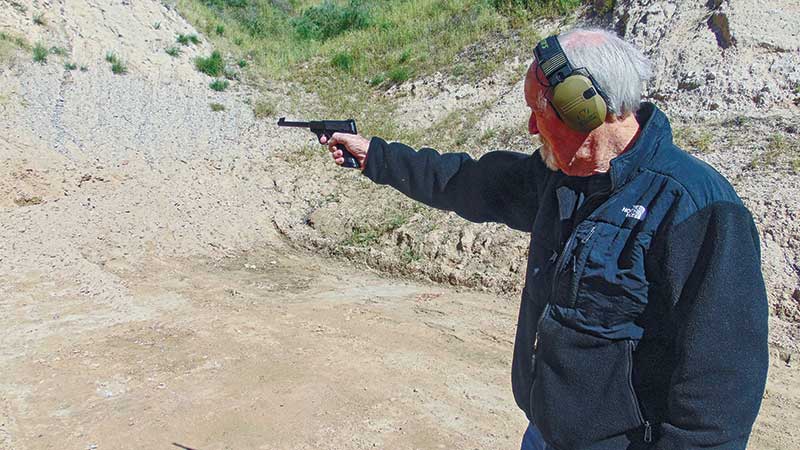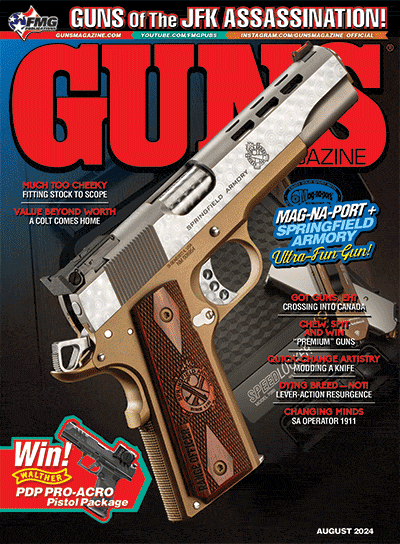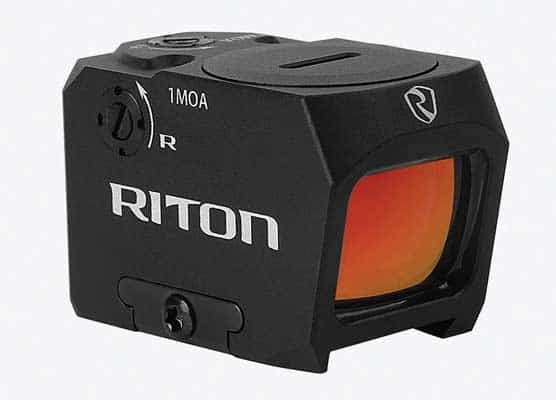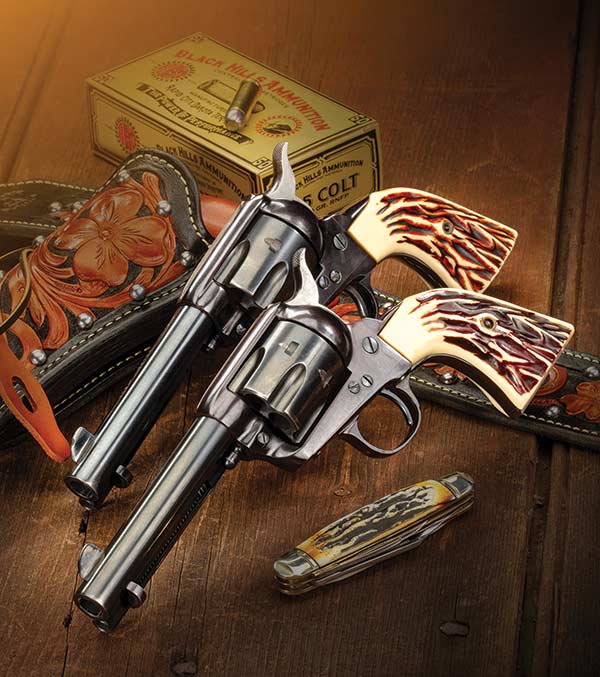The Browning Nomad
Vintage Rimfire “Trail Gun”
One definition of “sleeper” is, according to Merriam-Webster, “someone or something unpromising or unnoticed that suddenly attains prominence or value.” So in the interests of gun-mag appeal, let’s try to focus this admittedly dry definition onto something a retro-minded handgunner might be able to relate to.
Starting A Family
In 1962, the Belgian-made Browning Nomad was introduced along with the pricier Challenger and “more pricier” Medalist. The Nomad served as an economical alternative to its more expensive stablemates in much the same way the Colt Huntsman once did for the legendary Woodsman.
So, how economical an understudy was it? Well, in 1969 the standard blued Nomad listed for $64.50 as opposed to the blued Challenger at $79.50 and the blued Medalist at $129.50. To put this into 2024 inflation perspective, that’s an overall money spread of $545.50 to $1,095.
But talking today’s real world prices, the Medalist is probably going to fetch $1,500 and up whereas the Nomad will probably run you around $800, higher of course if it’s in cherry shape, although stumbling across an NIB specimen would probably be too much to hope for. These things got (and get) shot and it’s easy to see why.
But it would be a mistake to assume the Nomad is a “cheap” version of other two guns. In fact, production costs like those of the Medalist and Challenger contributed to the demise of all three and their eventual replacement by the Buckmark series beginning in 1985. But considering the competition from the ever-broadening lineup of the Ruger Standard Model, Browning’s “strategery” makes a certain amount of economic sense.
Features
Early guns featured an alloy frame, whereas later ones — such as what we got to shoot — were steel. The grips were unprepossessing checkered black plastic. The unloaded weight on our 6 ¾”-barreled specimen was right at the advertised 34 oz.
The 10-round magazines are interchangeable between the Nomad, Challenger and Medalist. That, plus the fact replacements are available through Triple K for a bit over 50 bucks a copy, constitute the good news. The bad? Original Browning factory mags can run about three times that.
The rear sight is adjustable for windage and elevation but the real plus to the Nomad is the big, easy-to-acquire “shark’s fin” front sight.
Shooting the Nomad was an absolute gas — well above and beyond what we were expecting. The trigger pull was excellent, slightly over 3 lbs. and as crisp as … well, we’ll refrain from the usual “breaking icicle” clichés, accurate as they may be. And of course, there was the nice big front sight. The sighting radius of the 6″-plus barrel was greatly appreciated. However, for the type of “packability” you’d want in a trail gun, the shorter 4 ½” version would most likely get the nod — we’re certainly hoping to luck into this variant someday!
Although the Euro-style heel magazine release can be a pain to those used to something easier and quicker to access, it’s not a deal-breaker for what’s essentially a .22 plinker, albeit a very sexy one. Other controls are minimalist and unobtrusive such as the side-mounted safety lever. And in the interests of simplicity, there’s no slide release nor is there a bolt hold-open feature for the last shot.
Range Time
We used two brands of “bulk pack” ammo to see what kind of performance the Nomad was capable of. These were Winchester USA 36-grain copper plated HP and 40-grain Federal Champion solids. From the 6 ¾” barrel the Federals clocked 1,032 fps while the Winchester stuff averaged 1,088. There were no malfunctions despite the elderly original magazine. Accuracy from a sandbag rest at 20 yards was excellent — slightly over an inch for both, with the Federals showing a slight leftward preference. This is nothing that couldn’t be easily remedied with rear sight windage tweak but since the gun belonged to shooting buddy John Wightman, we left well enough alone. But realistically, for verminous and/or edible small critters, we’d be more than happy with either load.
Sometime, it’d be nice to try this one out with some serious competition-grade .22 LR, say Lapua or something equally spendy. But for what you’d use the Nomad for, what we shot is just about right.
As a sidelight, we shot a few rounds from a Browning Challenger — also owned by John — to see how it compared to the less-expensive Nomad. We discovered it would take a far-higher level of talent than what we had on hand to discern any differences in inherent accuracy between the two guns with the two loads we used. And as far as “intrinsic shootablity” goes, the common consensus was there’s no practical reason to take the Challenger over the Nomad unless you’re simply enamored of the Challenger’s checkered wraparound walnut grips and nicer finish.
I’ve got very few gun fetishes left but one still remains — to stumble across long discontinued guns that sported a modest price tag, yet deliver far more than their original asking price might indicate. Particularly when compared to more expensive offerings on the manufacturer’s menu at the time. Examples include the Winchester Model 37 single-shot shotgun, and Remington’s wonderful Model 788 bolt-action centerfire.
